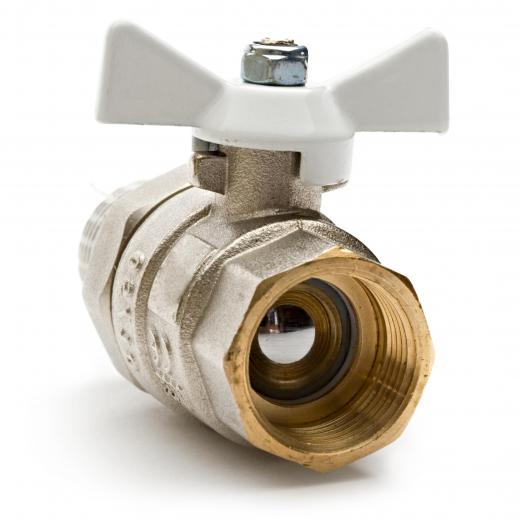A flange valve is a particular type of valve where a raised surface, usually in the shape of a lip or ring on the end of the valve fitting, is mated to a groove on the facing to which it attaches. This gives the valve connection increased strength in heavy-duty piping such as for that used in the chemical and petroleum industries. Visual illustrations of what a flange looks like can be commonly seen on railway car wheels or those of city trolley cars, where the steel lip or flange of the wheel fits within a groove on the track that it runs along. Flange sizes and joints are made to conform to one of several dominant standards, which include the British Standard (BS) adopted from the European Standard (EN) 1092 in June, 2007, to which the American Society of Mechanical Engineers (ASME) standard also conforms. A flange valve can also be made to similar American National Standards Institute (ANSI) specifications largely used in the US.
Types of flanges widely used in industrial settings usually follow one of five dominant shapes, including the Male-and-Female (M&F), Raised Face (RF), Ring-Type Joint (RTJ), Flat Face (FF), and Tongue-and-Groove (T&G) designs. Several major types of flange valve models also exist that utilize these flange shapes, including ball valves, butterfly valves, check valves, and gate/sluice valves. Flange fittings are also made out of one of four primary metals, including either steel, cast iron, aluminum, or copper. The major purpose that the flange connection serves on any flange valve design is that it increases the surface area of mated surfaces, which raises the tensile strength of the material that makes up the connection. Both the inside and outside diameter of a flange surface are precisely measured to gauge this strength and rate the valve.

The RF flange system is considered to be the most widespread model, where a ring is raised above the flat circular surface of a connecting plate which is bolted inline on a series of piping. Flange sizes in the RF design are directly proportional to the pressure that the flange fitting is built to handle, with the ASME flange model B16.5, for instance, having a flange height of 1.6 millimeters (0.063 or 1/16th of an inch), which can handle a volumetric pressure of up to 136 kilograms (300 pounds). A higher projecting RF flange of 6.4 millimeters (0.25 inches) is rated to handle a pressure level up to 1,134 kilograms (2,500 pounds). Installing a RF flange valve also includes a spiral-wound stainless steel gasket that is placed on the interior of the pipe where the flange valve mates to the grooved joint on the opposite fitting. This gasket is wound together with graphite and Teflon tape, which reinforces the strength of the flange valve connection and pipe joint overall.
Other types of flanges are used for very specific purposes. The FF flange valve has a flat face constructed with a less flexible though durable material, usually cast iron. FF flanges like the ASME B31.1 have to be custom fitted to facings made from carbon steel and joints or the brittle nature of the iron flange can fracture.
Ring-type joint flange designs are among the most complicated and, in some cases, use sealing rings or gaskets made from steel that prevent the flange from making actual physical contact with the joint. A broken flange valve can easily result if the technician crushes the gasket upon tightening the connection, as some RTJ flanges are meant to make contact with the opposite facing and others are not. The RTJ design is used primarily in applications with both high pressure and increased temperature.
While flange designs often look very similar and an ANSI flange can closely resemble an ASME flange upon visual inspection, they must not be mixed and matched. If RTJ-, T&G-, or F&M-designed flange valve fittings are bolted together, the contact surfaces will not mate precisely and the valve will fail. As of 2011, gaskets also do not exist that have different flange settings on each side, such as F&M on one and RTJ on the other, so dangerous leaks can occur from non-functioning gaskets in a faulty assembly as well.
